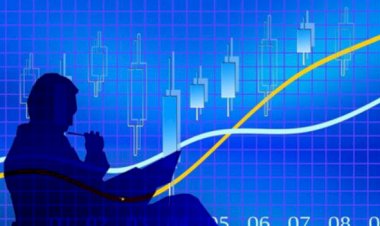Impact of Central Bank Policies on Global Markets
The Impact of Central Bank Policies on Global Markets In today's interconnected world, the decisions made by central banks reverberate across global markets. Central banks, such as the Federal Reserve in the United States, the European Central Bank (ECB), and the Bank of Japan (BOJ), play a pivotal role in shaping economic landscapes. Their policies influence everything from inflation and employment to exchange rates and investor confidence. Understanding the impact of these policies can provide valuable insights into the future of global markets.

Monetary Policy Tools
Central banks primarily use three tools to influence the economy: interest rates, open market operations, and reserve requirements.
1. Interest Rates: By raising or lowering interest rates, central banks can make borrowing more or less expensive. Lower interest rates generally encourage borrowing and investing, while higher rates tend to curb inflation and slow down economic activity.
2. Open Market Operations: This involves the buying and selling of government securities. When a central bank buys securities, it injects money into the economy, which can lower interest rates and boost economic activity. Conversely, selling securities can help cool down an overheated economy.
3. Reserve Requirements: These are regulations on the minimum amount of reserves that banks must hold against deposits. Lowering reserve requirements allows banks to lend more, stimulating the economy, while raising them can reduce lending and slow down economic growth.
Global Market Reactions
Central bank policies in major economies can have significant ripple effects across global markets. Here are a few key ways these policies impact the global economy:
1. Currency Fluctuations: Changes in interest rates can lead to fluctuations in currency values. For example, if the Federal Reserve raises interest rates, the U.S. dollar often appreciates due to higher returns on investments denominated in dollars. This can make U.S. exports more expensive and imports cheaper, affecting trade balances.
2. Capital Flows: Higher interest rates in one country can attract investment from other countries seeking higher returns. This can lead to capital inflows, strengthening the local currency and potentially leading to asset bubbles in stocks and real estate.
3. Commodity Prices: Many commodities, such as oil and gold, are priced in U.S. dollars. When the dollar strengthens, these commodities become more expensive for buyers using other currencies, which can reduce demand and lower prices.
4. Stock Markets: Central bank policies can also influence stock markets. Lower interest rates tend to boost stock prices by making bonds less attractive and reducing borrowing costs for companies. Conversely, higher rates can lead to lower stock prices as investors seek higher returns in safer assets.
Recent Trends and Future Outlook
In recent years, we have seen unprecedented central bank interventions in response to global economic challenges. The COVID-19 pandemic, for instance, prompted central banks to slash interest rates and implement large-scale asset purchase programs to support economies. These measures led to a surge in liquidity, buoying stock markets and lowering borrowing costs.
However, as economies recover, central banks face the challenge of unwinding these measures without disrupting markets. The potential for inflation has become a central concern, prompting discussions about the timing and pace of interest rate hikes.
Conclusion
Central bank policies are crucial in shaping global economic conditions. Their actions influence currency values, capital flows, commodity prices, and stock markets, among other factors. For businesses and investors, staying informed about central bank decisions and understanding their potential impacts is essential for navigating the complexities of global markets. As we look to the future, the strategies employed by central banks will continue to be a key determinant of economic stability and growth.




































Comments (0)